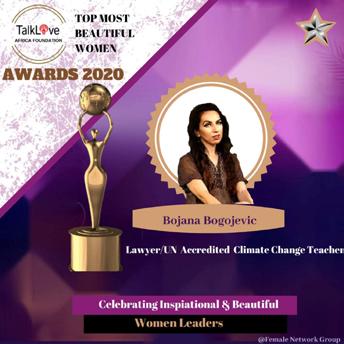
4 minute read
BOJANA BOGOJEVIC
HUMAN TRAFFICKING
18.10.2020 was the 14th EU Anti-Trafficking Day.
Advertisement
As a lawyer, it’s my obligation to educate or remind you that trafficking in persons is a serious crime and a grave violation of human rights.
The United Nations defines human trafficking as:
“The recruitment, transportation, transfer, harbouring or receipt of persons, by means of the threat or use of force or other forms of coercion, of abduction, of fraud, of deception, of the abuse of power or a position of vulnerability or the giving or receiving of payments or benefits to achieve the consent of a person having control over another person, for the purpose of exploitation.”
I can be free and say it is a global problem. It is almost impossible to find a country which isn’t affected by some trafficking because it can be affected as country of origin, a transit country and final destination for trafficking victims. Sometimes one country can be a combination of all those three stages.
The United Nations Convention against Transnational Organized Crime, adopted by General Assembly resolution 55/25 of 15 November 2000, is the leading international instrument in the fight against transnational organized crime. It opened for signature by the Member States at a High-level Political Conference convened for that purpose in Palermo, Italy, on 12-15 December 2000 and entered into force on 29 September 2003. The Convention is further supplemented by three Protocols, which target specific areas and manifestations of organized crime:
The Protocol to Prevent, Suppress and Punish Trafficking in Persons, Especially Women and Children.
The Protocol against the Smuggling of Migrants by Land, Sea and Air.
The Protocol against the Illicit Manufacturing of and Trafficking in Firearms, their Parts and Components and Ammunition.
Countries must become parties to the Convention itself before they can become parties to any of the Protocols.
United Nations Office on Drugs and Crime Web Site (UNODC) assists States in their efforts to implement the Protocol to Prevent, Suppress and Punish Trafficking in Person (Trafficking in Persons Protocol).
The Protocol to Prevent, Suppress and Punish Trafficking in Persons, especially Women and Children, was adopted by General Assembly resolution 55/25. It entered into force on 25 December 2003. It is the first global legally binding instrument whether as a country of origin, transit or destination for victims.

According to the definition from Trafficking in Persons Protocol, trafficking in persons has three elements:
THE ACT (What is done);
THE MEANS (How it is done);
THE PURPOSE (Why it is done).
The most asked question always was and still is, which countries are affected by human trafficking?
There is no immunity. At the beginning of this article, we saw three stages of trafficking act.
In the majority of cases, trafficking is national or regional, but there are also cases of long-distance trafficking.
If we divide the world in this article on Europe, Asia and USA we can say Europe is the destination for victims from the most comprehensive range of destinations, victims from Asia are trafficked to the broadest range of destinations. The Americas are prominent both as the origin and destination of victims of human trafficking.

Types of human trafficking?
Trafficking can take various forms and may involve:
1) sexual exploitation, including prostitution;
2) forced labour or services;
3) slavery, servitude and related practices;
4) the removal of vital organs.
Trafficking can also take the form of exploitation for the purpose of forced criminality, such as pickpocketing, shoplifting and drug trafficking.
According to the US Department of State Forced labour, is the most significant sector of trafficking in the world.
Debt bondage is a form of human trafficking in which an individual is forced to work to pay a debt.
Sex trafficking disproportionately affects women and children and involves forced participation in commercial sex acts.
Perceptions of human trafficking often involve women forced into prostitution—just one aspect of human trafficking. Survivors of trafficking also include men and children.
Signs of human trafficking:
A person who has been trafficked may:
1) Show signs that their movement is controlled;
2) Have false identity or travel documents;
3) Not know their home or work address;
4) Have no access to their earnings;
5) Be unable to negotiate working conditions;
6) Work excessively long hours over long periods;
7) Have limited or no social interaction;
8) Have limited contact with their families or with people outside of their immediate environment;
9) Think that they are bonded by debt.
It is important to emphasize that each victim of human trafficking has specific needs that are unique to the situation.
Due to COVID19 and its consequences, we can expect more victims of human trafficking, and we must end the impunity of traffickers by stepping up prevention efforts and bringing perpetrators to justice. Because in the majority of cases, victims are women and girls as the easiest targets.
At the end of this article, it is crucial to understand HUMAN TRAFFICKING IS NOT PEOPLE SMUGGLING!
Even people can easily say how patterns of human trafficking are similar to those seen in people smuggling; they are different legally; a broad distinction can be made between the two.











